Peanut Butter and Chocolate
Integrating Hadoop with SQL Server
Who Am I? What Am I Doing Here?
 |
Catallaxy Services |  @feaselkl |
 |
Curated SQL | |
 |
We Speak Linux |
Core Assumptions
To get the most of this, I will assume the following:
- Hadoop is set up in your environment
- You are more familiar with T-SQL (or .NET) than any Hadoop-centric language
- You want to combine use Hadoop in conjunction with SQL Server
Why Integrate?
That the Division of Labour is Limited by the Extent of the Market
As it is the power of exchanging that gives occasion to the division of labour, so the extent of this division must always be limited by the extent of that power, or, in other words, by the extent of the market. When the market is very small, no person can have any encouragement to dedicate himself entirely to one employment, for want of the power to exchange all that surplus part of the produce of his own labour, which is over and above his own consumption, for such parts of the produce of other men’s labour as he has occasion for.
- Adam Smith, The Wealth of Nations, Book I, section III
Why Integrate?
Specialization and division of labor. Works for people, works for data.
SQL Server as a relational engine:
- Provably good transactional systems (ACID compliance, normal forms, constraints, etc.)
- Quick return times for application interfaces
- Warehousing: answering known business questions
- Great model with a lot of talented people
Why Integrate?
Specialization and division of labor. Works for people, works for data.
Hadoop as a processing engine:
- Aggregation of log data
- Allocation and batch processing
- Processing non-relational data (e.g., genetic data)
- Text processing
- "Amorphous" data
- Spelunking: answering unknown business questions
Goals
- Show several methods for integrating Hadoop with SQL Server.
- Begin to show the value of this integration.
- Take a glimpse into the world of data over the next several years.
- Shoehorn economics and baseball into a technical discussion.
Integration Methods
- Ambari
- Sqoop
- .NET
- SSIS
- Linked Servers
- Polybase
Ambari
Basic Idea
Ambari is a framework for monitoring and administering a Hadoop cluster.
It includes tools to maintain HDFS clusters, Hive tables, and much more.
Ambari
When To Use
Use Ambari for one-off, occasional work. This is the easiest method, but also the most time-consuming.
Ambari
Basic Steps
- Create files and folders in HDFS
- Upload files into HDFS
- Create and query Hive tables
- Output Hive results to files
Ambari
Demo Time
Scroll down for image-heavy demo.
Ambari
Open HDFS Files.
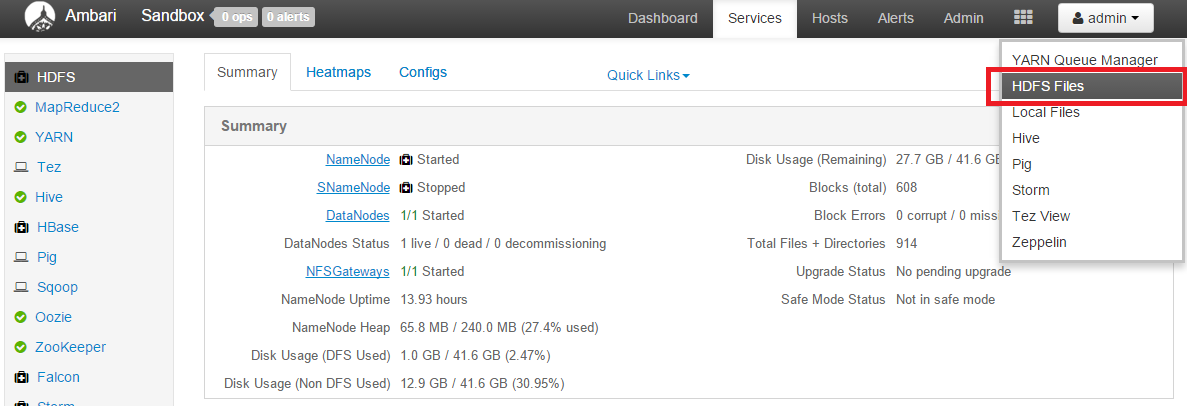
Ambari
Go to the tmp folder.
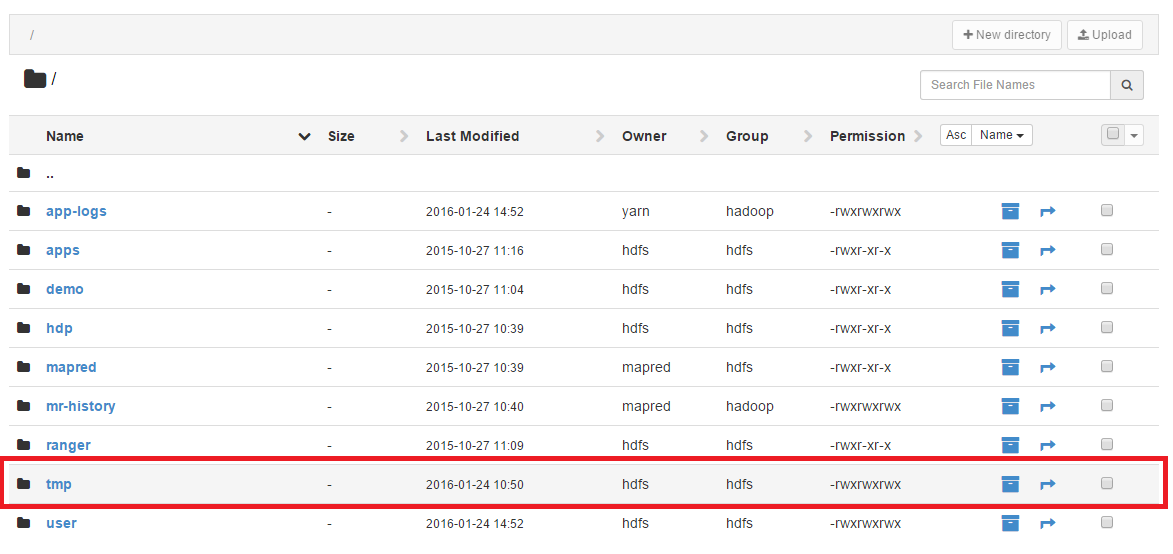
Ambari
Create a new directory.


Ambari
Set folder permissions.
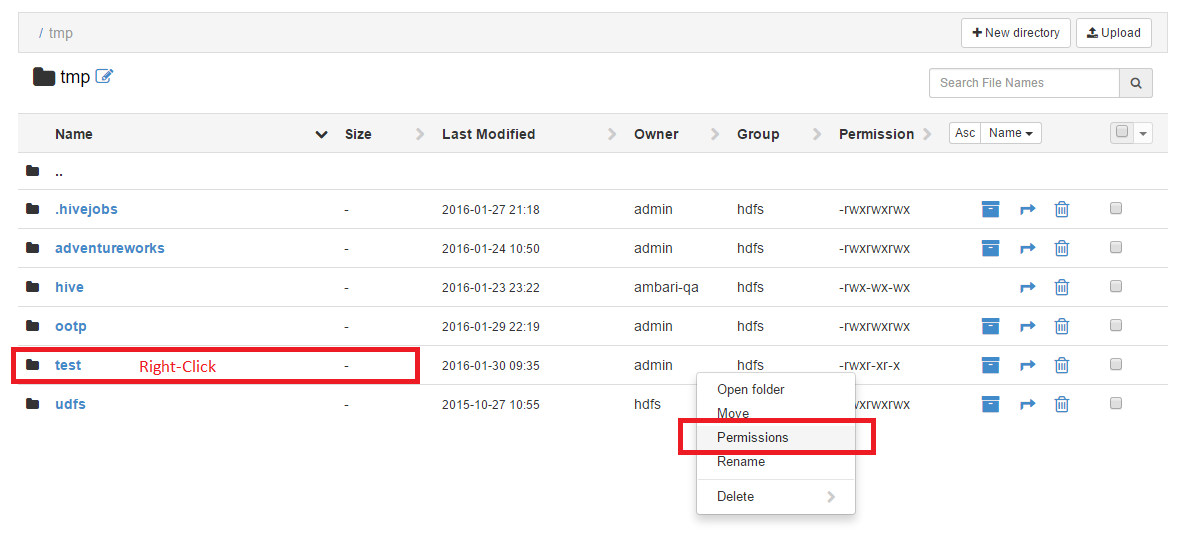
Ambari
Set folder permissions. For production, don't indiscriminately do this, of course...
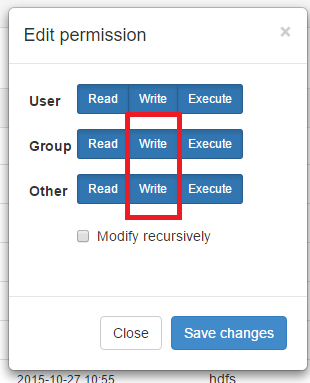
Ambari
Upload a file.


Ambari
Upload a file.


Ambari
Delete a file.

Ambari
For Hive work, copy BattingRatings.csv to /tmp/ootp. Make sure that /tmp/ootp and the file both have write turned on.

Ambari
Open up Hive.
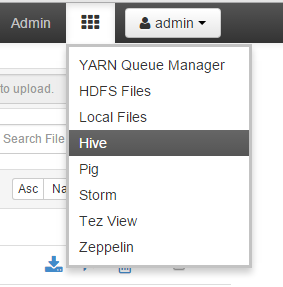
Ambari
Create the BattingRatings table.
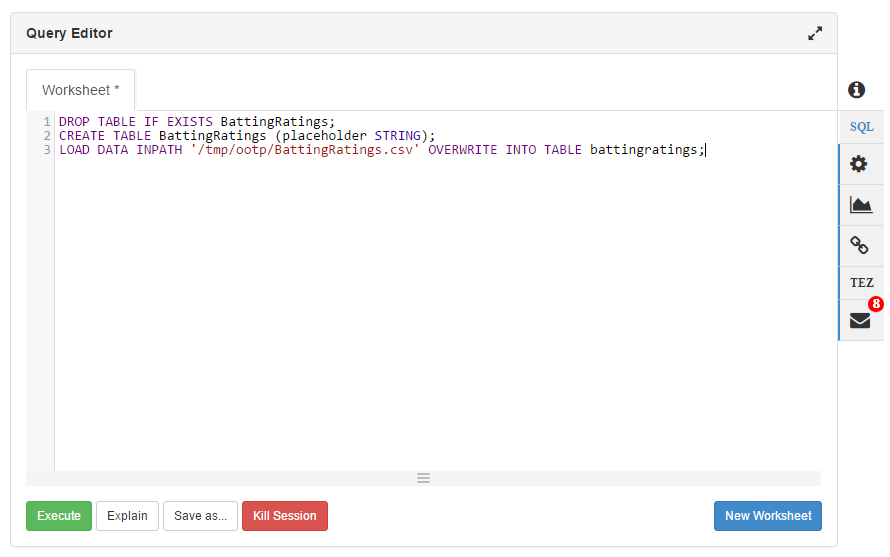
Ambari
Select top 100 rows from the BattingRatings table.
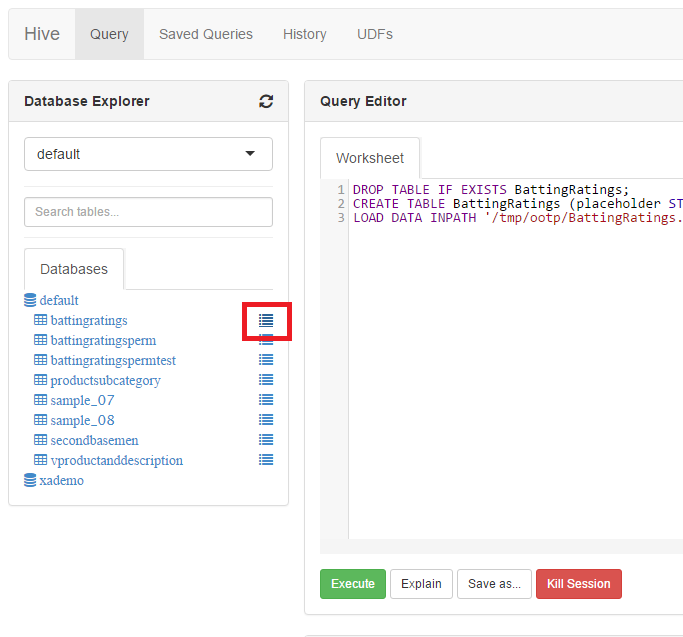
Ambari
BattingRatings table results.
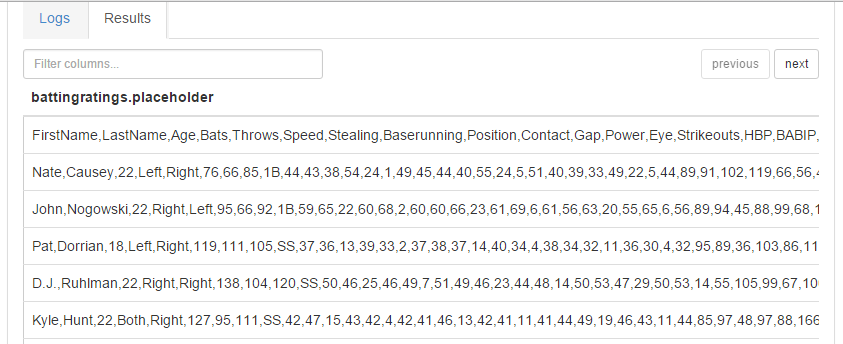
Ambari
Write results to output to load into SQL Server.

Ambari
Write Hive query to file. Run the BattingRatingsPerm script first.
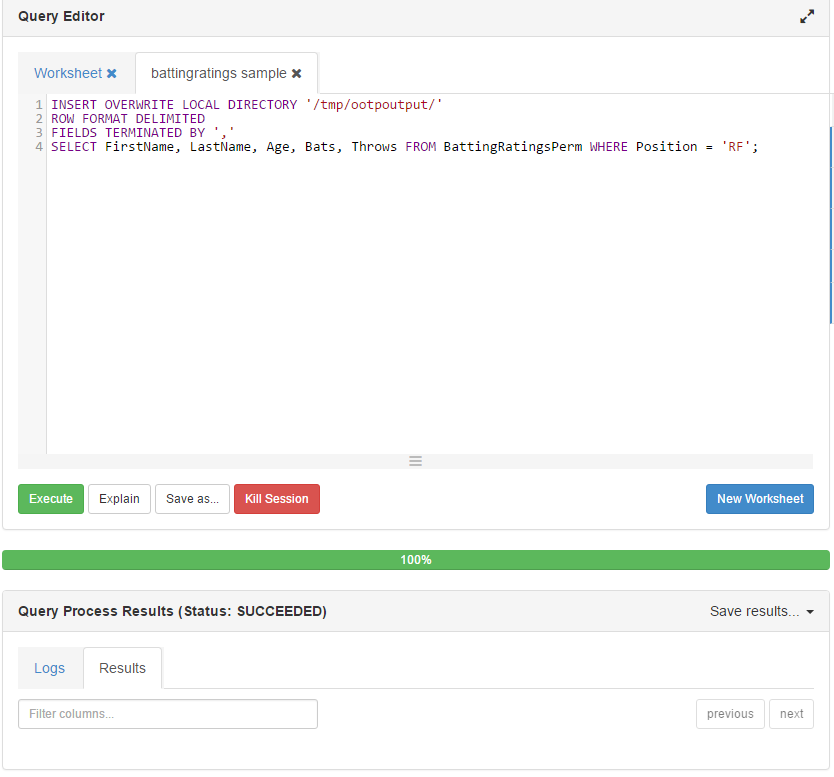
Ambari
The output is LOCAL files, not HDFS. We specified that in the query.
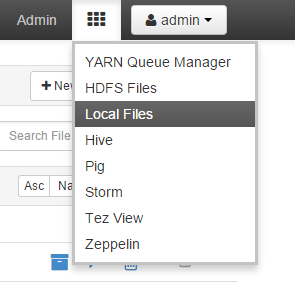
Ambari
Our output file is in /tmp/ootpoutput.

Integration Methods
- Ambari
- Sqoop
- .NET Program
- SSIS
- Linked Servers
- Polybase
Sqoop
Sqoop is a quick-and-easy console program designed to ingest data from database servers (like SQL Server) into Hadoop and also push data back to database servers.
Pre-req: install the Microsoft JDBC driver.
Sqoop
When To Use
Sqoop is good for loading entire tables/databases into Hadoop and loading staging tables into SQL Server.
Sqoop
Demo Time
Scroll down for image-heavy demo.
Sqoop
Create the SecondBasemen table.
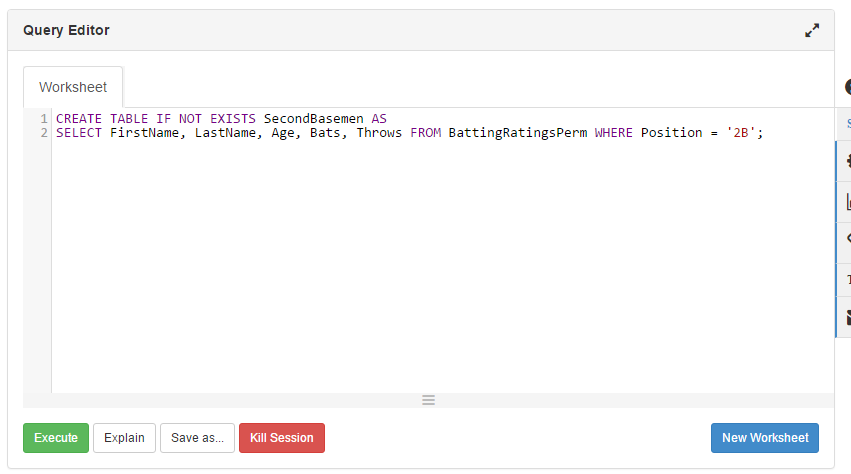
Sqoop
Grab the Microsoft JDBC driver and put into /usr/hadoop/[version]/sqoop/lib.
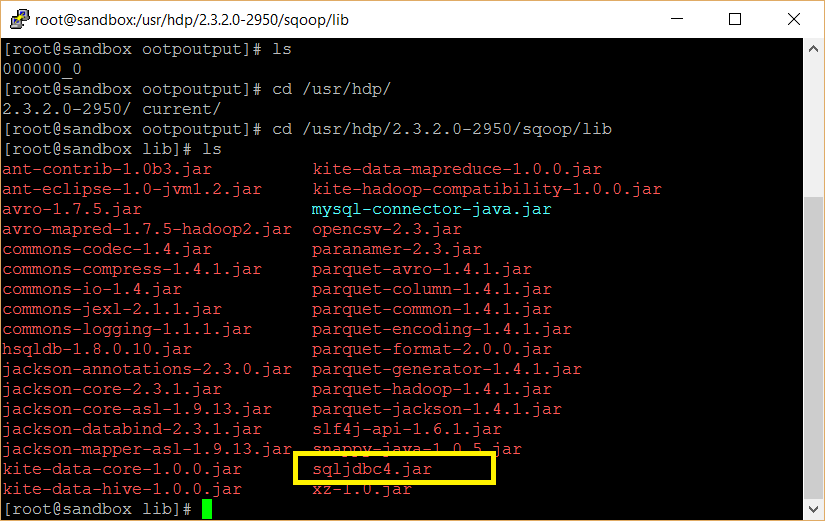
Sqoop
sqoop list-databases will list databases
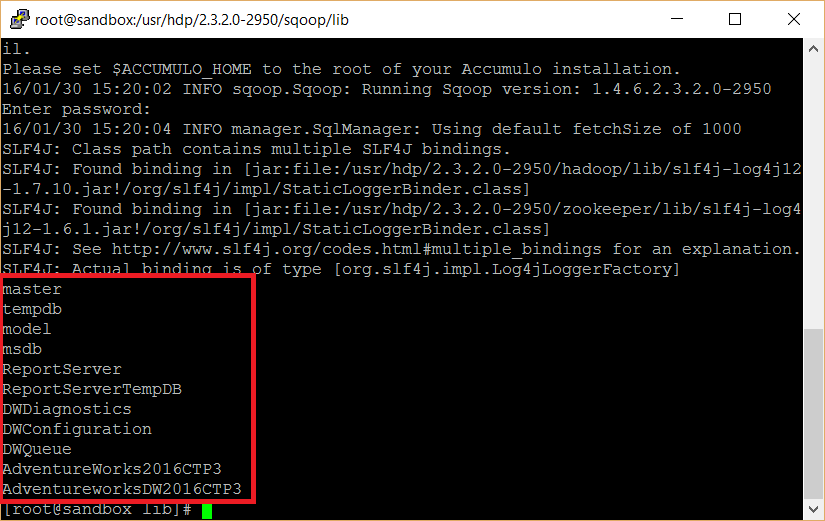
Sqoop
sqoop list-tables will list tables for the default schema
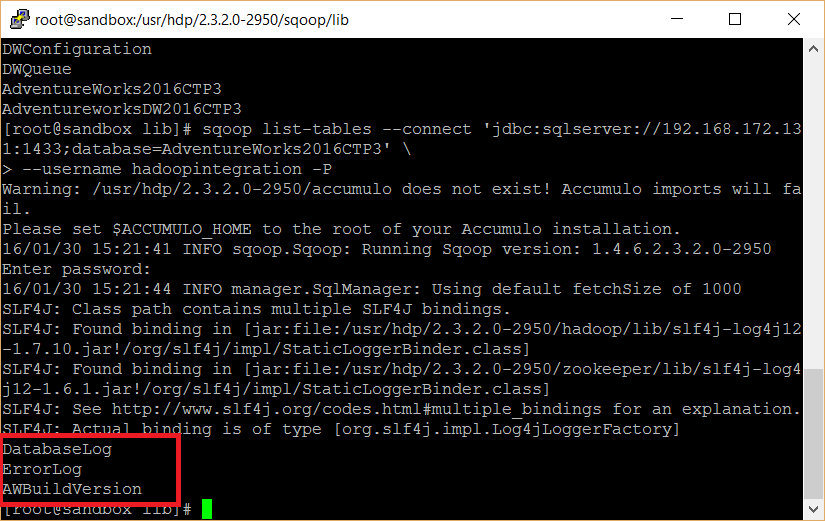
Sqoop
Other important options:
- sqoop import loads a table into Hadoop
- sqoop export writes a table to your RMDBS
Check out SqoopCommands.txt for examples on how to use these commands and more.
Integration Methods
- Ambari
- Sqoop
- .NET Program
- SSIS
- Linked Servers
- Polybase
.NET Program
If you install the Microsoft.Hadoop.MapReduce NuGet package, you can connect to a Hadoop cluster and perform file maintenance.
Our example will use FSharp.Data.SqlClient to insert rows into SQL Server.
.NET Program
When To Use
Use .NET when you have complex and custom data flows, or if most of your ETL infrastructure is in .NET.
.NET Program
Demo Time
Check out HDFSFileManagement.FSharp for the code.
Integration Methods
- Ambari
- Sqoop
- .NET Program
- SSIS
- Linked Servers
- Polybase
SSIS
Visual Studio + SQL Server Data Tools 2016 leads to good Hadoop integration.
SSDT 2016 includes HDFS file source and destination via WebHDFS or WebHCat.
If you're using older versions of VS or SSDT, you'll have limited access.
SSIS
When To Use
Use SSIS for Hadoop ETL if this is what you normally use for SQL Server ETL.
SSIS
Demo Time
Check out HadoopIntegration.SSIS for the code.
Integration Methods
- Ambari
- Sqoop
- .NET Program
- SSIS
- Linked Servers
- Polybase
Linked Servers
Linked servers let us connect external resources to SQL Server and query them like SQL tables.
Although the most common use case for linked servers is connecting other SQL Server instances, we can also tie in Excel, flat files, and even Hive tables.
Linked Servers
When To Use
Use linked servers to connect Hive and SQL tables together in queries, particularly before SQL Server 2016.
Linked Servers
Demo Time
Scroll down for image-heavy demo.
Linked Servers
Grab the Microsoft Hive ODBC driver. Then, create a System DSN.
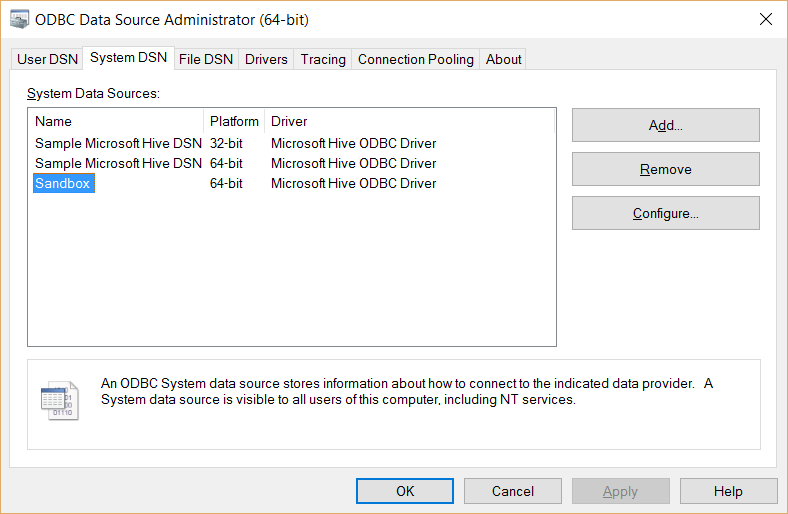
Linked Servers
Add a new DSN using the Hive ODBC driver.
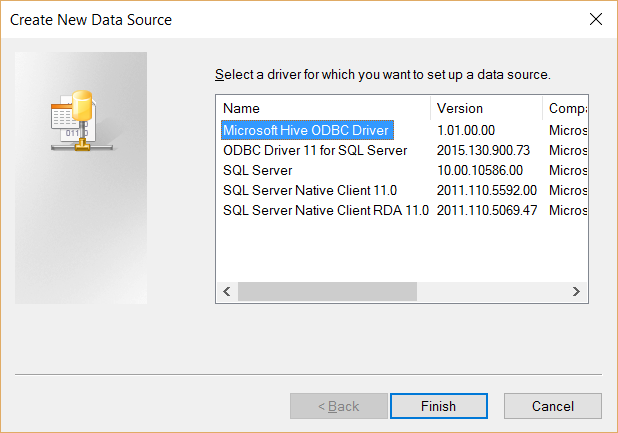
Linked Servers
Configure the Hive DSN.
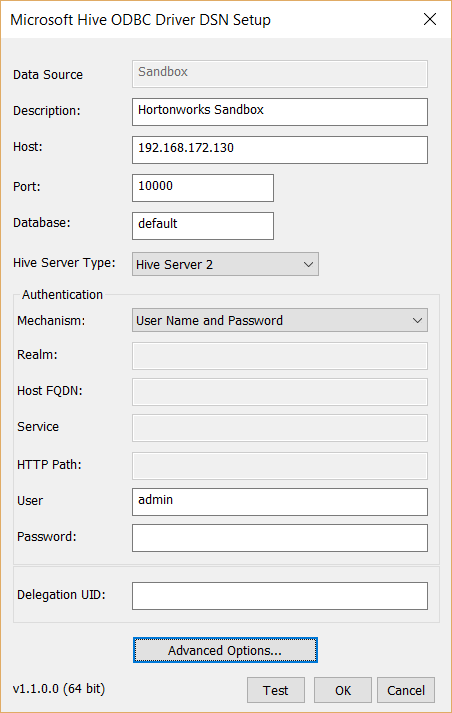
Linked Servers
Make sure that "Default string column" is no more than 8000 bytes.
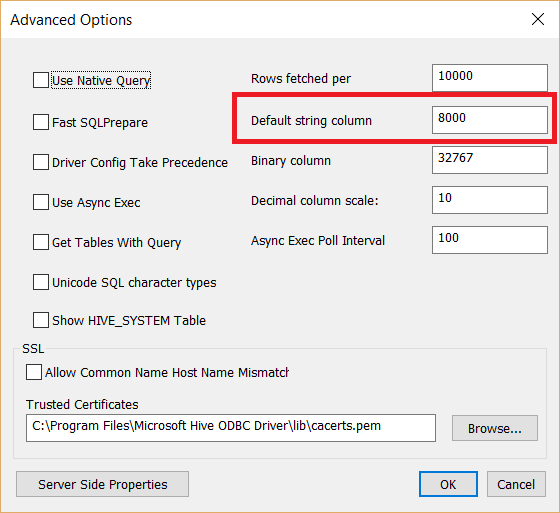
Integration Methods
- Ambari
- Sqoop
- .NET Program
- SSIS
- Linked Servers
- Polybase
Polybase
Polybase is Microsoft's latest Hadoop integration offering. First introduced in SQL Server 2012 PDW (now APS), it is now generally available in SQL Server 2016.
Why Polybase?
Polybase has several advantages over linked servers:
- Predicate pushdown
- Statistics on external tables
- Parallelized SQL Server (control and compute nodes for external table queries)
- Superior query analytics
Why Polybase?
Polybase is not perfect:
- MapReduce only: no Spark, no Tez
- Limited collation support (worse for non-US customers)
Polybase
When To Use
Use Polybase to join SQL tables to Hadoop data sets, particularly if you want to write T-SQL to query the data.
Polybase
Demo Time
Comparison Table
| Method | Good | Bad | Best Uses |
| Ambari | Easy to use | Manual processing | One-off moves |
| Sqoop | Easy to use; easy to automate | Cannot create SQL tables; limited query support | Staging table ETL; migrating into Hadoop |
| .NET | Powerful | Harder to write; finicky | Custom processing |
| SSIS | Good ETL patterns; integrates nicely | HDFS objects not (yet) complete; joining data is slow | Established ETL program |
| Linked Server | T-SQL syntax; LS common | Needs ODBC driver; can be slow; just Hive | Joining SQL data with Hive data |
| Polybase | T-SQL; Perf; Intellisense | Only MapReduce | Joining SQL data with HDFS data |
Wrapping Up
There are plenty of ways to integrate Hadoop with SQL Server. Mix and match methods as they suit you needs.
To learn more, go here: http://CSmore.info/on/hadoopsql
And for help, contact me: feasel@catallaxyservices.com | @feaselkl